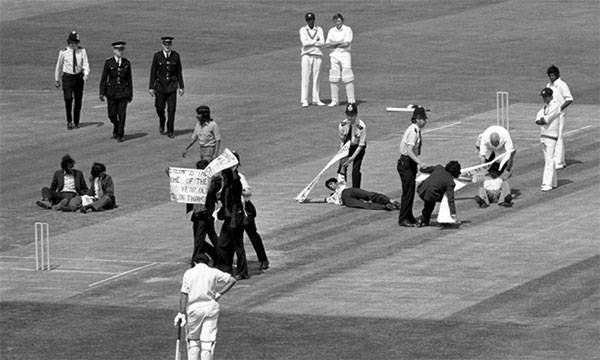
Previously, until the late 1900s, many world-class spinners were being produced in the cricketing world, including that of Murali—the off-spinner who has the highest number of wickets in ‘Test cricket’—Warne—the ‘magician bowler’—, Kumble—the Indian great—and so on. However, with the advent of the 21st century, many new rules have been laid out by the International Cricket Council (ICC), favouring the batsmen immensely. Is this a significantly huge drawback for the spinners in particular? Of the batsmen and the bowlers, conditions favor whom?
Now, this can lead to two propositions: either the quality of bowlers has significantly dropped, or the performance of batsmen has improved. But, due to the conditions favouring batsmen, such as flat pitches—particularly in the One Day International (ODI) cricket—batting has become relatively easy. In the previous era(s), however, due to the tough competition and better-quality spinners being produced after the final selections, many gems came into being. Another explanation, albeit I personally do not believe in it much, is that every era has its own category of better players, case in point being batsmen of today; although it is indeed debatable. In addition, many good spinners are still being produced nowadays, undoubtedly. Yes, we do have good bowlers such as Imran Tahir, Ravichandran Ashwin, Jadeja, Yasir Shah, Rashid Khan etc., but if we compare them with the other spinners of the previous era(s), there’s a tremendous difference in the bowling quality-wise. According to my humble view, such spinners, like the aforementioned ones—Murali, Warne and Kumble—are produced very often, each in decades, perhaps. Although I hope that is not an exaggeration!
Let us now move to the batting part. If the conditions and new set of rules/laws put forth by the ICC favor them, then the question one asks is are they really good? What if we have Steven Smith, Virat Kohli or Babar playing in the previous so years? Will they still be making heaps of runs? Or, are they specifically designed for what today’s cricket requires from them? Most probably, the answer would be ‘no’, as they would not be able to survive amid such a hostile environment of the previous times, playing with Brian Lara, Tendulkar, Imran Khan, and countless others.
Let me give you a few examples how 'batting' has changed immensely:
a. The size of the 'bats' has significantly increased, along with their new designs being lightweight, thereby making it trouble-free for the batsmen to bat.
b. The boundaries have become very shorter; hence, it is quite beneficial for batsmen.
c. Many field restrictions have taken place, making it a drawback for the fielding team(s); and of course the bowlers (particularly spinners).
d. More international leagues—such the Big Bash League, Carribean Premier League (CPL), Pakistan Super League, and countless others—are a confidence boost-up arena for the batsmen, and they get to know all the weaknesses and strengths of the international bowlers (including that of spinners, mainly).
On the ending note, the list of explanations for change in cricketing trend is not exhaustive. However, the above propositions give us a better understanding of the game of cricket, specifically of today's era.
Now, this can lead to two propositions: either the quality of bowlers has significantly dropped, or the performance of batsmen has improved. But, due to the conditions favouring batsmen, such as flat pitches—particularly in the One Day International (ODI) cricket—batting has become relatively easy. In the previous era(s), however, due to the tough competition and better-quality spinners being produced after the final selections, many gems came into being. Another explanation, albeit I personally do not believe in it much, is that every era has its own category of better players, case in point being batsmen of today; although it is indeed debatable. In addition, many good spinners are still being produced nowadays, undoubtedly. Yes, we do have good bowlers such as Imran Tahir, Ravichandran Ashwin, Jadeja, Yasir Shah, Rashid Khan etc., but if we compare them with the other spinners of the previous era(s), there’s a tremendous difference in the bowling quality-wise. According to my humble view, such spinners, like the aforementioned ones—Murali, Warne and Kumble—are produced very often, each in decades, perhaps. Although I hope that is not an exaggeration!
Let us now move to the batting part. If the conditions and new set of rules/laws put forth by the ICC favor them, then the question one asks is are they really good? What if we have Steven Smith, Virat Kohli or Babar playing in the previous so years? Will they still be making heaps of runs? Or, are they specifically designed for what today’s cricket requires from them? Most probably, the answer would be ‘no’, as they would not be able to survive amid such a hostile environment of the previous times, playing with Brian Lara, Tendulkar, Imran Khan, and countless others.
Let me give you a few examples how 'batting' has changed immensely:
a. The size of the 'bats' has significantly increased, along with their new designs being lightweight, thereby making it trouble-free for the batsmen to bat.
b. The boundaries have become very shorter; hence, it is quite beneficial for batsmen.
c. Many field restrictions have taken place, making it a drawback for the fielding team(s); and of course the bowlers (particularly spinners).
d. More international leagues—such the Big Bash League, Carribean Premier League (CPL), Pakistan Super League, and countless others—are a confidence boost-up arena for the batsmen, and they get to know all the weaknesses and strengths of the international bowlers (including that of spinners, mainly).
On the ending note, the list of explanations for change in cricketing trend is not exhaustive. However, the above propositions give us a better understanding of the game of cricket, specifically of today's era.
